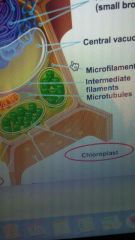![]()
![]()
![]()
Use LEFT and RIGHT arrow keys to navigate between flashcards;
Use UP and DOWN arrow keys to flip the card;
H to show hint;
A reads text to speech;
10 Cards in this Set
- Front
- Back
- 3rd side (hint)
|
What are the five main features of living rhings |
Complexity and organzation from molecules to the population
Response to the environment In order to maintain their organization
Energy processing Energy is captured from the environment and is transformed (transduction)
Reproduction Transmissions of genes to the next generation
Evolution Adaption to the environement
|
|
|
|
Level of organization within the biosphere |
Though their are not properties in proceeding level it is because it is arranged in a way to understand the whole complexity in a correct order.
The minimum living unit in life is ONE BIG CELLL. Living things are CELLULAR ENTITIES |
|
|
|
Difference between organelle and organ |
Organ functional component present in cell (subcompartment) Organs function in a larger function (organ system) |
|
|
|
Define the biosphere 👉ecosystems |
The whole planet made up of sums of ecosystems And then ecosystems made up of abiotic and biotic, interacting with each other |
|
|
|
Difference between populations and communities |
A community describes all species coexisting in an ecosystem (@n entite array of living organisms inhabit and interact). Then each community of living things is broken down into array of population (so a specific type of species inhabiting the community). And then it comes down to an organism |
|
|
|
Who are the two scientist that discovered the cell theory, and what is the cell theory |
Schwamm and Schleiden 1.all organsims are made up os cells 2.and cells are the simplest collection of matter that can live. |
Bot statt with Ss' |
|
|
Which domains belong to prokaryotes, and how are prokaryotes different from eukaryotes? |
Bacteria and Archaea (do contain cell wall) Eukaryotes DNA is an organelle which is boinded by a double membrane (Nucleus)
|
|
|
|
Describe nuclear envelope |
Double membraned seperated space of 20-40. The membrane is NOT CONTINUOUS, and there fore are refereed to colelcticelt as Nuclear envelope. Gaps or intereuptions betweem different parts are called NUCLEAR PORES. Pores regulate entry amd exit of material in and out of the cell |
|
|
|
Mitochondria |

Converts energy to forms that cells can use for work, the sites are for cellular respiration, the metabollic process uses oxygen to drive the generation of ATP by éctracting energy from sugar fats and other fuels. And chloroplast another sote for energy manafacturing converts solar enerfy to chemical energy amd uses the opposite of cellular repsiration co2 and h20 |
|
|
|
What is the function of endomembrame system |
Functions in diverse metabolic process, including syntesis of lipid, metablosm or carbohydrates, and detoxificatoon of drugs and poison |
|

